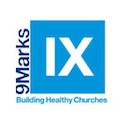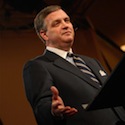Rick Muchow, the worship leader of the well-known Saddleback Church in Southern California, pastored by best selling author, Rick Warren, has written a short devotional book entitled The Worship Answer Book. The intention of The Worship Answer Book (WAB) is to “stimulate personal discovery and to help [the reader] consistently move into the presence of God” (17). Such is the definition for Muchow of what biblical worship consists. Muchow seeks to make WAB a tool to assist us in “understanding biblical worship – what God says worship is and how we are to worship him” (15).
WAB consists of fifty-four chapters arranged in seven different sections. These sections include: “The Basics of Worship,” “Worship in the Bible,” “Personal Worship,” “Music . . . and More,” “Group Worship,” “Leading a Managing Worship,” and “Change & Conflict in Worship.” The book is published in a smally, very colorful and glossy format that one comes to expect from Countryman Publishing.
WAB has a number of aspects I can readily commend. Muchow’s discussion of worship in general and references to worship in the Bible are helpful and accurate. He provides a concise chapter reviewing all of the Hebrew and Greek terms in the Bible commonly translated “worship,” along with quick definitions and corresponding passages (76-80). Related “worship-terms” from the Bible are also defined in a following chapter (82-85). His content in the second section, “Worship in the Bible,” is a good overview of biblical terms translated as worship and associated with worship. He has helpful overviews of what Jesus taught about worship and how he expressed worship while on earth. Muchow also notes that unbelievers cannot truly worship God (38ff). In short, WAB helpfully summarizes the theology of worship in an accurate and simple way that would benefit a new believer and provide a good devotional reminder to more seasoned saints.
While the basic theological positions of WAB are accurate, some of the practical methodological conclusions tend to move away from a consistent and accurate application of the Bible. While Muchow affirms that non-believers cannot truly worship God in a church service and furthermore quotes his pastor, Rick Warren, noting that unbelievers should witness the worship of the church (39-40), he then suggests that little congregational singing should be done in a public worship service so as to not offend the nonbeliever (201). This appears inconsistent. Later, he suggests that using non-believers in the choir or band is a good way to involve unbelievers in the ministry of the church (232). Again, this is quite inconsistent.
Other problematic and less helpful sections of the book include his suggestion that public worship services need to embrace more openness for dancing (179-182). For biblical support, Muchow refers to Moses’ sister Miriam dancing in the wilderness, David dancing while entering Jerusalem and the writer of Ecclesiastes saying there is a time for dancing (179). None of these passages suggest the regular practice of dancing in public worship. In fact they are quite unusual within their respective contexts. I remain unconvinced.
The most fundamental problematic issue in WAB is the dichotomy between theology and practice within the subject of worship. Muchow states, “There are many methods and styles of ministry. As long as they are effective and do not violate Scripture, they are valid” (208). This approach to thinking presupposes that the Scriptures and theology do not suggest anything regarding methodology or that methodology does not reveal one’s theology or belief about the Scriptures. Thus, the potions of WAB that argue for a seeker-centered approach to public worship, denies those opening portions of the book that actually define worship biblically. For example, Muchow suggests that secular songs should be and can be used effectively in seeker settings “to touch people during our worship services” (165). He also indicates that it is healthy to divide the church according to worship style (240). How do these methods square with a biblical theology of worship presented earlier in the book? I suggest they are quite contrary.
The Worship Answer Book does describe the worship philosophy and practices of Saddleback Church in Southern California. In my estimation, WAB does provide some helpful summarizations of a biblical philosophy of worship, but departs too quickly from this philosophy in its practical conclusions.






